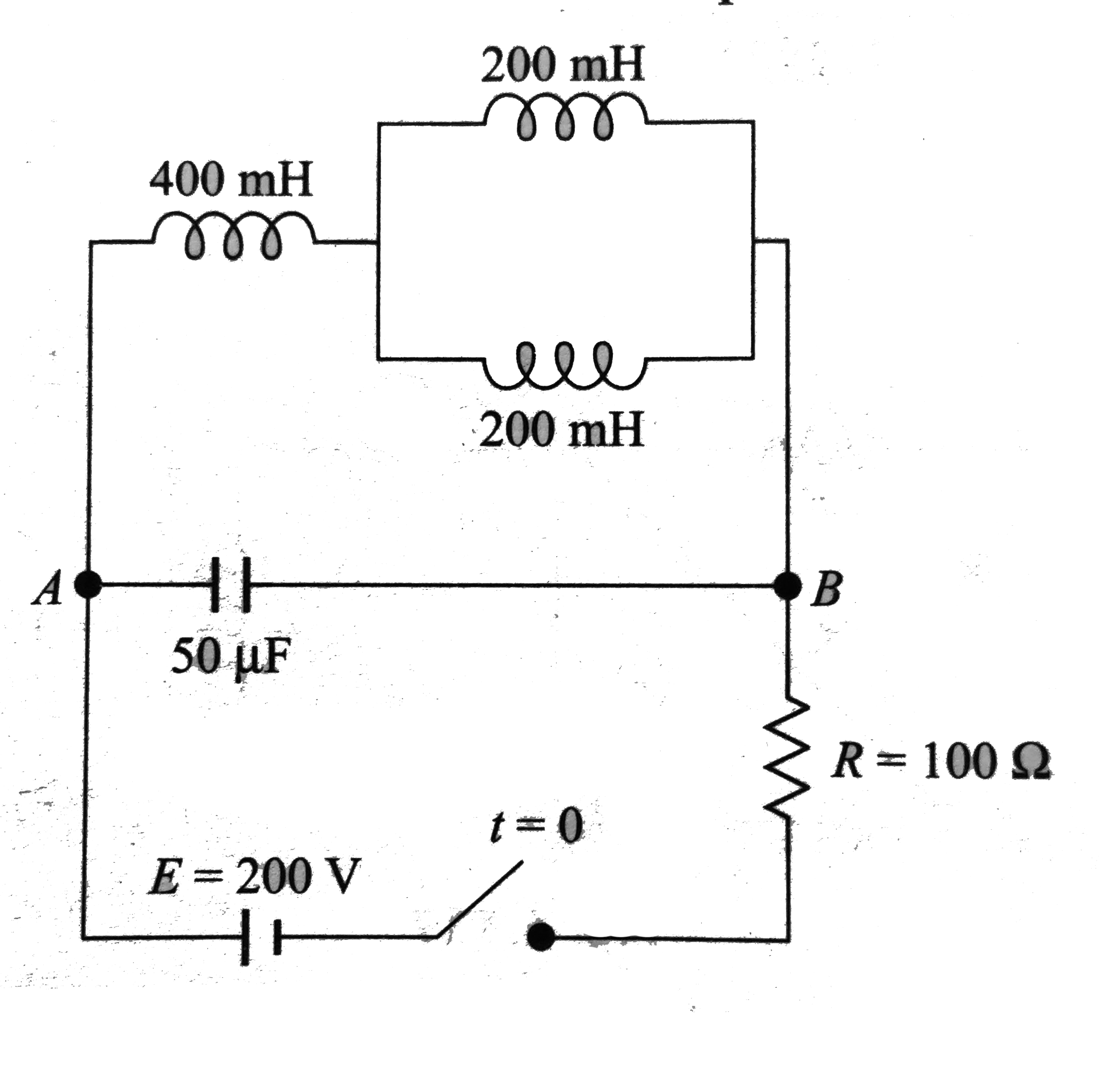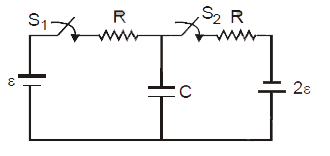In the given circuit, switch SW1 is closed and SW2 is open. After a long time, Sw1 is opened and SW2 is closed. Calculate the ratio of charge on capacitor B to that on capacitor A.
'(##CEN_KSR_PHY_JEE_CO19_E01_012_Q05##)'
The correct Answer is:1.5
Topper's Solved these Questions
Similar Questions
At t =0 switch S1 is closed and remains closed for a long time and S2 remains open. Now S1 is opened and S2 is closed. Find out

Charge on the capacitor long after that moment.
View SolutionIn given circuit initially switch Sw1 is closed and Sw2 is open, Now Sw1 is opened and Sw2 is closed, what is the heat liberated in resistance R?

View Solution
Knowledge Check
In the circuit in Fig. switch S1 was closed for a long time . At time t=0 the switch is opened.

Find the angular frequency of oscillation of the charge on the capacitor.A100rads−1B200rads−1C300rads−1sD400rads−1
In given circuit initially switch Sw1 is closed and Sw2 is open, Now Sw1 is opened and Sw2 is closed, what is the heat liberated in resistance R?

View SolutionInitally switch S1 is closed, after a long time, S1 is opened and S2 is closed. Find the heat produced in coil after long time.

View SolutionAt t =0 switch S1 is closed and remains closed for a long time and S2 remains open. Now S1 is opened and S2 is closed. Find out

The current through the capacitor immediately after that moment
View SolutionIn the given circuit, if charge on 6μF capacitor is 10μC,thenthechar≥(∈mu C)on4 mu F capacitor will be
'(##CEN_KSR_PHY_JEE_CO19_E01_010_Q03##)'
View SolutionAt t =0 switch S1 is closed and remains closed for a long time and S2 remains open. Now S1 is opened and S2 is closed. Find out

Total charge flown through the cell of emf 2ε after S2 is closed.
View SolutionIn given circuit initially switch S1 is closed for long time and then opened and now S2 is closed. The total energy dissipated in 4Ω resistor is equal to :-

View SolutionIn the circuit in Fig. switch S1 was closed for a long time . At time t=0 the switch is opened.

Find the angular frequency of oscillation of the charge on the capacitor.
View Solution
